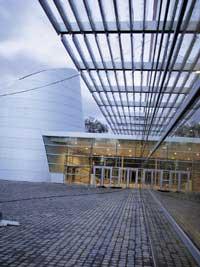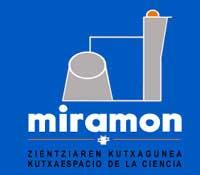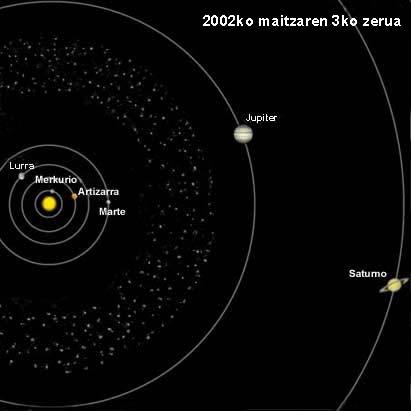Miramón: Kutxaespacio de la Ciencia
2000/12/01 Kortabarria Olabarria, Beñardo - Elhuyar Zientzia Iturria: Elhuyar aldizkaria
What's there?
Permanent exhibition
This is 2,400 square meters, for the moment, because due to the construction of new land is still going to increase. The current distribution is as follows:
Ship Earth: Knowing how the Earth is and how it can affect our activities on Earth. It also shows how natural phenomena affect us.
Mechanical world: Forces, movements, inertia, turns, are everyday facts. In this room you can understand the operation of many simple mechanisms.
Light games: Color and light room. The basic properties of light and its most spectacular appearances are shown. Flat and curved mirrors, reflection, refraction, lenses and prisms...
Sense and sensitivity: In this room we work the sight, the ear, the touch and the smell. The experiments that have been prepared allow evidence of the errors or difficulties that arise when interpreting what is perceived through the senses.
Surprising materials: Surprising plastics, magnetic and photochromic liquids, self-lubricating materials, memory alloys... What can they be used for?
Energy sparks: Electricity is not visible, but is perceived by effects. In this room you can see that electricity and magnetism are expressions of a fundamental force that, if they come together, can produce mechanical effects.
Complex systems: Biology, economics, sociology and other sciences investigate complex systems and try to explain their surprising behaviors. This section contains the results that explain the activity of complex systems.
Communication: Behind the conventional phone is a very complex system with its cables, artificial satellites, fiber, optical amplifiers. Every day new systems are created to transport signals further and further, faster and faster, with higher quality. Possibility to see closely the devices and techniques that are part of the communication.
Garden elements: Before entering the Miramón building, aesthetics and science come together to pay tribute to the history and philosophy of the ancient Greeks. Then they had earth, water, fire and air as fundamental elements to form the cosmos.
TxikKlik: Bridge to bring children closer to the world of science and technology. In a stimulating, informal and dynamic space, Miramón proposes a team game: to invite the child to look for the unknown in a family environment, to discover the basic principles of science and technology in an environment close to their reality.
Planetarium
Look with the eyes of the browser you need to orient yourself. Stars and constellations marked in several civilizations the time of sowing the seed or harvesting, personifying accounts of their gods and legends. An ideal place to try to look like them, and to look at the stars of heaven with attention to the scientist who wants to know the last detail of the universe. Music, poetry, art and science come together in the audiovisual show: 40 slide projectors, 3 video projectors, digital sound, special effects and Digistar II projector.
Astronomical observatory
The video camera adapted to optical devices sends images directly from the dome of the tower. During the day you will be able to observe the solar rashes and bumps and discover the impressive details on the surface of the Sun. Through the filters you can safely see the day of the Sun. In the evening you will see images of spectacular gas clouds, supernova explosion remains, areas in formation of stars or distant galaxies.
Travelling exhibitions
Room of about 900 square meters in which dinosaurs are exposed. In addition to this space, there is another of about 300 square meters for travelling exhibitions.

Gai honi buruzko eduki gehiago
Elhuyarrek garatutako teknologia





